Today I’m going to talk about the most versatile lens in my camera bag: the 35mm lens. I didn’t know it was possible to love another lens more than I loved my 50mm lens, but my friend Erin assured me I would, and she wasn’t wrong. The 35mm lens is what’s on my camera for all day-to-day photography and events. When I’m traveling, I generally start with it because it will provide the most versatility. If I’m shooting a landscape, it can provide a wide view. When I’m in a low light situation, it’s wide enough to let light in. The 35mm lens creates beautiful portraits. I’ve yet to find much that this lens isn’t good at, so let’s have a look today.
Basic Camera Information:
The best bang for your buck comes from investing in quality lenses. I shoot with Canon 5D Mark IV, but you do not need an expensive camera to create beautiful photos. My Canon 50D and my Canon Rebel xTi served me well for travel photography for several years. I upgraded my camera when I started doing wedding photography. Last year, I took my Canon 5D Mark II in for cleaning, and it came back with a scratched sensor. I decided to upgrade with a Black Friday deal I found on Canon Price Watch because of the sensor issue and Tom was starting to get interested in video. (For my Nikon friends, I’m sure there is a similar website.)
The price of your camera is irrelevant if you are still shooting in auto mode. For better photography, you’ll want to understand how aperture, shutter speed, and ISO affect one another. Note: I no longer purchase a camera that comes with a lens. I purchase the body and buy the lenses I want separately. I don’t love the lenses that come with cameras. They work, but if you plan to upgrade, just save the money on the first go around.
TL, DR: Invest in lenses over cameras. Learn to use your camera.
35mm Lens Information:
Canon offers a couple of 35mm lenses at various price points. I shoot with the Canon 35mm f/1.4 USM, but there is also a 35mm f/2.0 lens, as well as a 35mm f/2.8 Marco lens. Even still, there is a 35mm f/1.4 II USM lens, if you want to spend even more money. As I’ve said previously, I purchase most of my lenses from the Canon Refurb site. I’ve had a great experience with them and find the lenses to be as sharp as a tack.
I’ve never shot with a macro lens, so I can’t speak to whether or not that is the right purchase, but I think that you can get by with the f/2.0 lens if you don’t want to spend the money for the f/1.4 version. It would also be a lighter lens if you are concerned about the weight. This lens is significantly lighter than the 50mm and seems to be lighter than the 24mm as well. I definitely prefer it if I’m going to be carrying my camera for a long period of time.
What I Use the 35mm Lens For:
Everything. Just kidding. Sort of. Almost. Not really. But actually. The wide angle of the 35mm lens makes it more versatile than the 50mm lens, but it doesn’t have some of the image distortion that you see on the 24mm lens or the 16-35mm wide angle zoom lens. While this slight distortion can be corrected in post-processing, I enjoy getting things right SOOC (straight out of the camera) when I can. The 35mm lens makes that very easy.
The 35mm lens is great for travel photography. I find that colors are brilliant and images are sharp. If you are taking photos of sweeping vistas, you can do it with the lens. That being said, if you want to capture foreground details against a wider landscape, it does really well with that, too. Wandering around the tight alleyways of Venice? This lens has you covered. Photographing your hotel room? This lens can do the trick. Taking photos of your family on vacation? This lens works. Similar to the 24mm lens, I love the 35mm lens for food photography.
One last thing, this lens does night photography really, really, really well. Night images are always very sharp. I’m sure it has something to do with the USM mechanics, but this is my very favorite lens for night and low-light photography.
What I Don’t Use the 35mm Lens For:
Nothing. Seriously. While sometimes I may prefer to zoom in on a subject, I will switch to a lens with a different focal length… after I shoot some photos with this lens. I always find myself coming back to the 35mm. Erin wasn’t wrong when she told me that this lens would change my life. I hope you enjoy it just as much.
35mm Photography Examples and Discussion
Landscape Photography
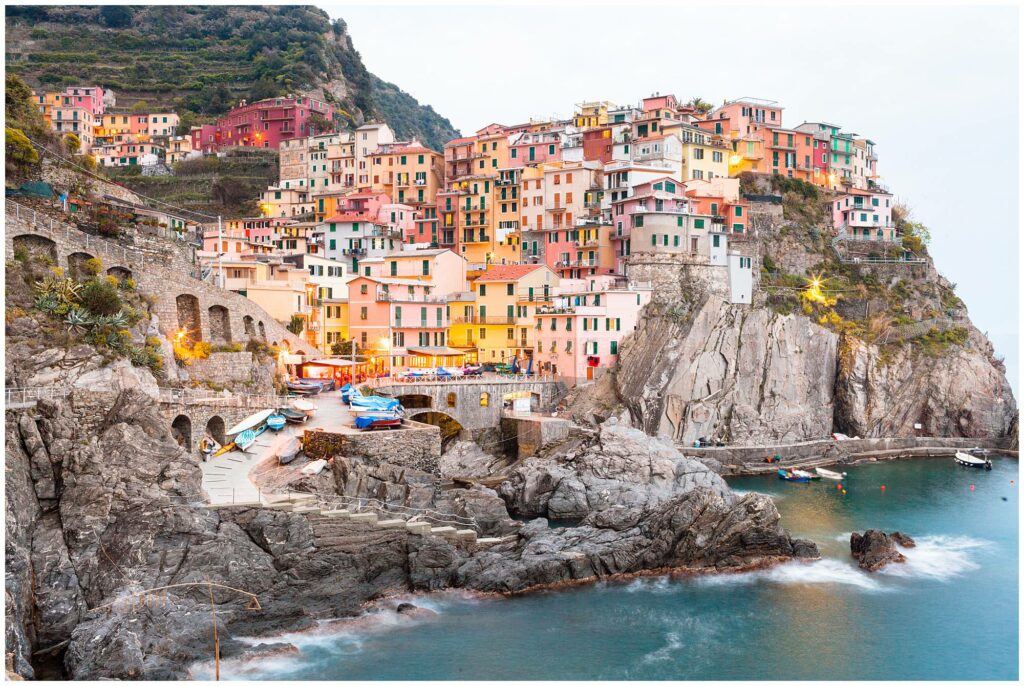
This photo of Manarola harbor shows what a great job this lens does with landscape photography. It feels as if the entire image is in focus, from the wine terraces to the buildings. The long exposure smoothed the choppiness of the sea while still showing the movement of the waves. The cloudy evening allowed for beautiful colors, even though we didn’t get to witness a beautiful Cinque Terre sunset. (Pro tip: Even if it looks like golden hour will be a bust, get out there anyway. Blue hour will still be beautiful and you might end up with some images like this.)
City Landscape Photography
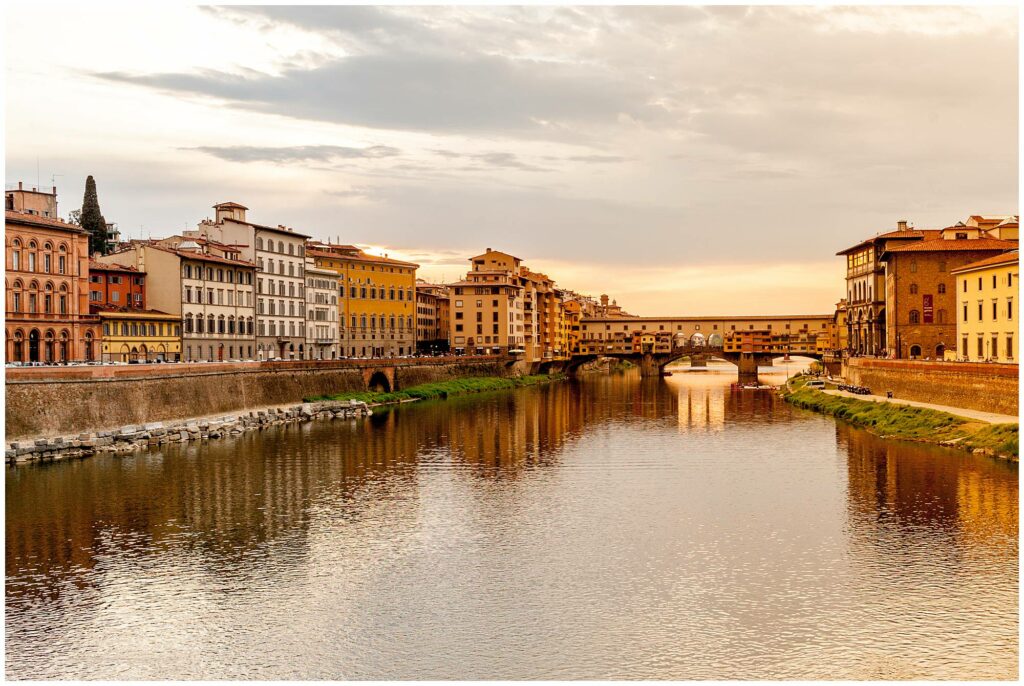
The changing light of Florence can be impossible to capture from inside of the city walls. Most of the time, you’ll have to go to the Piazza Michelangelo if you want to capture the sunset views against the Ponte Vecchio. This photo was taken from the Ponte alle Grazie, which is actually quite a bit further from the Ponte Vecchio than the Ponte Santa Trinita. In this case, the 35mm lens captured both sides of the Arno River, but I copped the image in post-processing to get rid of a crane that has been in Florence for the past several years. I love how both the architecture and the water are sharp in this image, never mind the beautiful, soft colors of a Florentine sunset.
Close In Landscape Photography
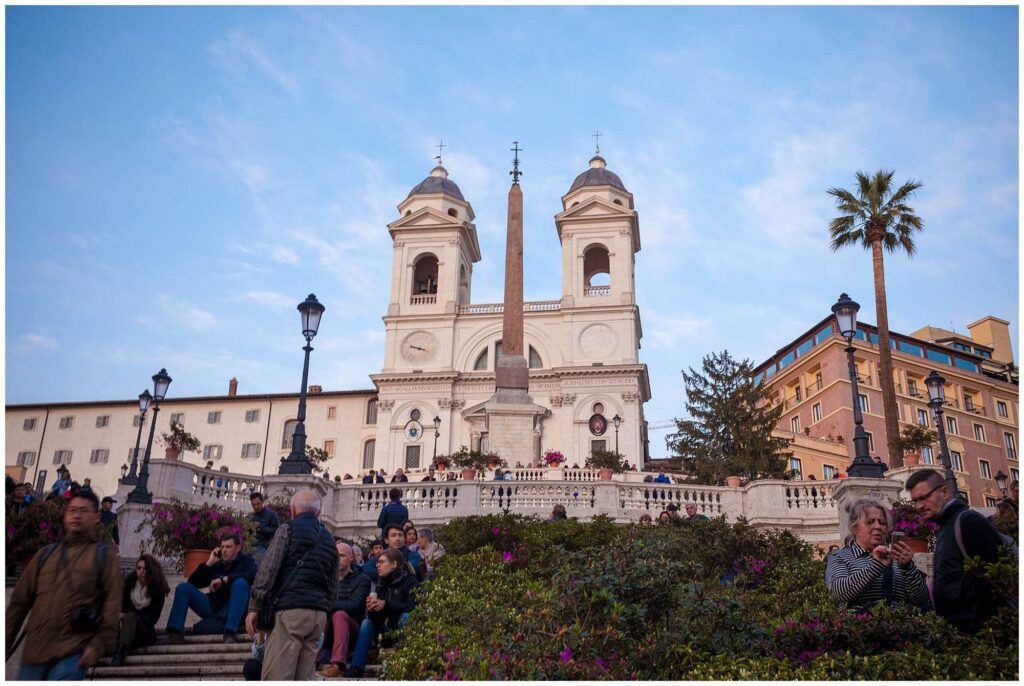
Have you ever tried to take a picture of a building or monument in a small confined space? I feel like Europe is filled with these moments, and it can be very frustrating to get a photo that keeps the details sharp. Enter the 35mm. We were at the Spanish Steps in Rome during the most crowded point of the day. Shooting with the 17-35mm lens or the 24mm lens would have included more people in the shot. The 35mm was the perfect focal length for me to ensure that the Spanish Steps and Trinita dei Monti remained the focal point of this image.
Photographing Tight Quarters, even at night
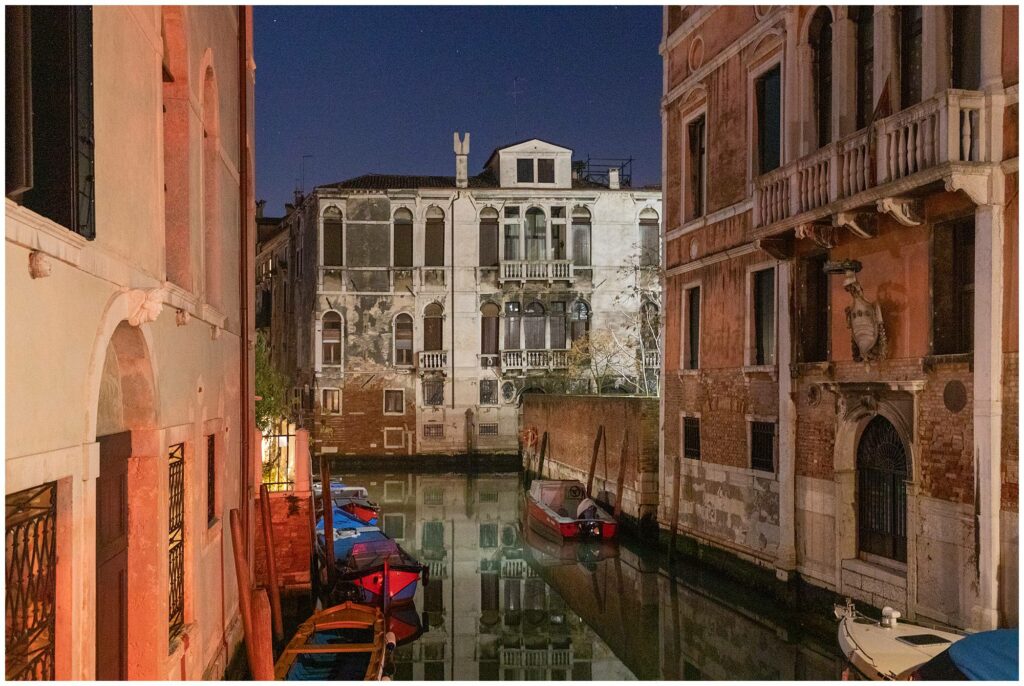
I didn’t know if anything would capture the beautiful of Christmas Eve in Venice. Between the beautiful colors of night, the stillness of the water, and how you can see exactly where I was standing, the 35mm lens does a pretty good job of reminding me exactly what that night felt like. This image might have been the turning point for me and the Canon 5D Mark IV, too. Up until then, I was wondering if upgrading had been a mistake. The learning curve on the 5DMIV is more extreme than I expected. I think the color profile is significantly different than the Canon 5DMII and I was having a hard time hitting my stride on manipulating the settings. The image proves otherwise; the magic of Christmas, if you will.
Night and Low Light Photography
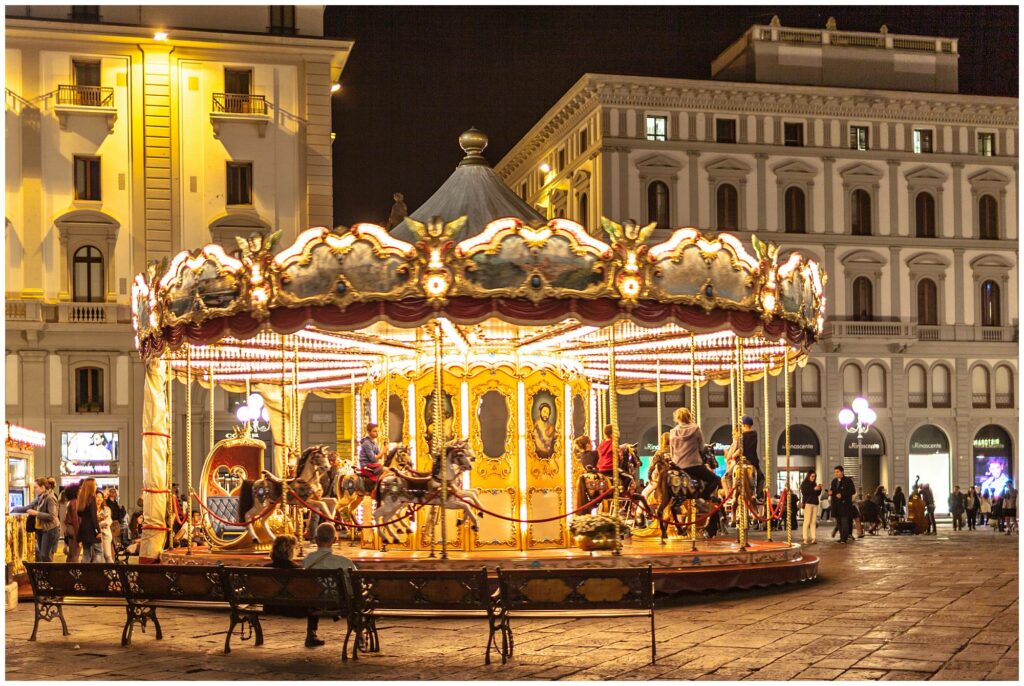
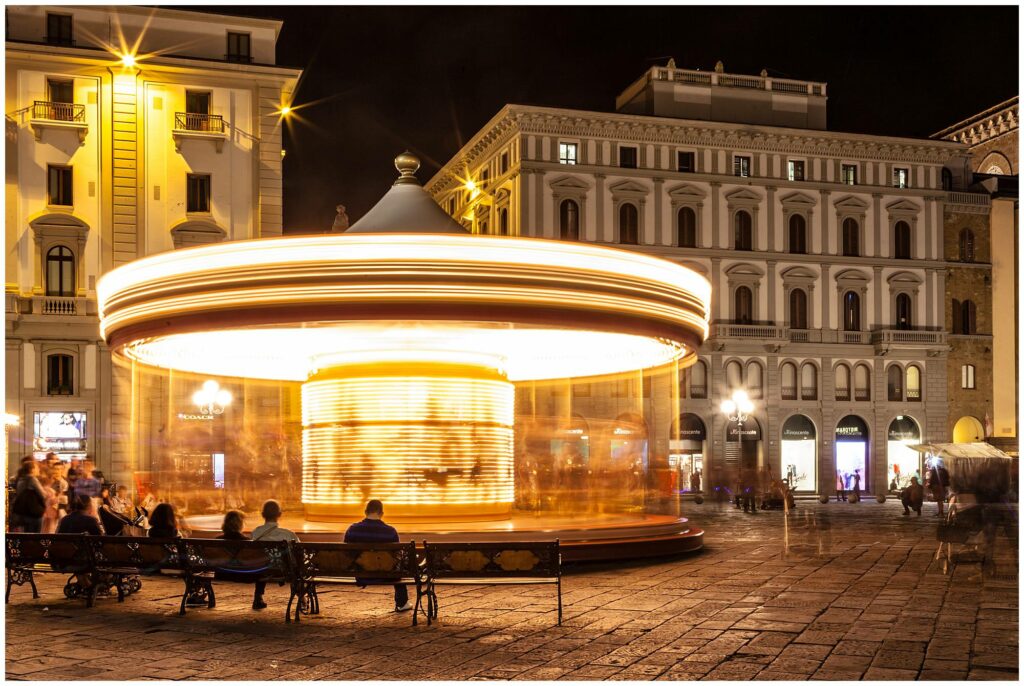
These two images illustrate how well the 35mm lens does in low light situations, regardless of aperture. While you can see how the image loses some sharpness in the well-lit areas of the top image, the background remains crisp. The short shutter speed allows for the capture of a split second while the merry-go-round is moving. In the long exposure photo, you can see how the smaller f/stop allows for the background to stay crisp, even though the long exposure captured the movement of the merry-go-round. My focal point remained constant on both of these images, but the other settings created drastically different images.
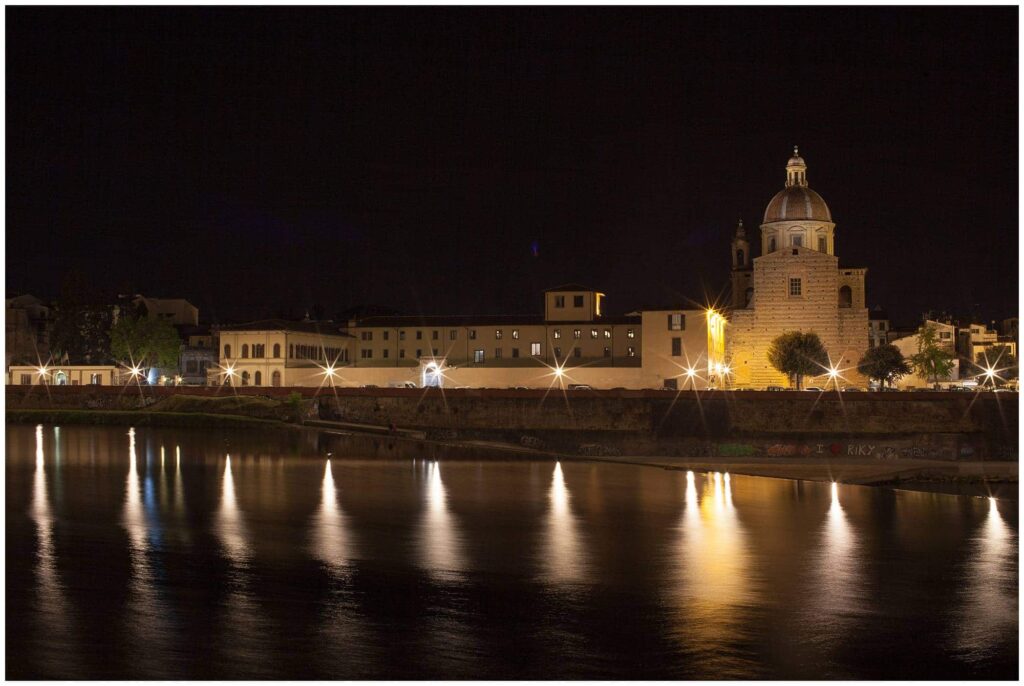
This photo, taken from the balcony of one of our rooms at the St. Regis, shows how well this lens does with landscape photography. The small aperture setting requires a longer shutter speed, but allows all the details to remain sharp. This image perfectly captures what Florence looked like on that calm evening.
Food Photography
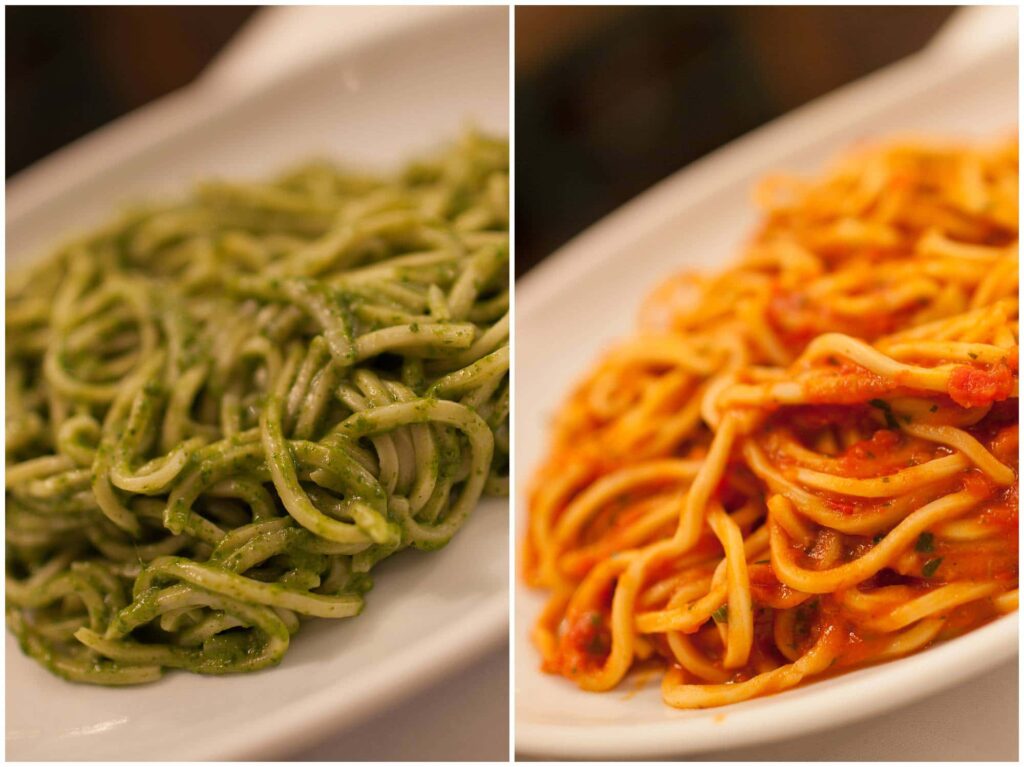
I rarely shoot with my lens wide open. That being said, sometimes you’ll find yourself in a dark restaurant in Cinque Terre and you want to photograph your meal. Since I don’t shoot with flash when I travel (ever), dropping down my f/stop as low as it would go was the best way to ensure my subject was in focus. In this case, you can see how sharp the lens is, even when it’s wide open. In both of these shots, you can see the beautiful bokeh (“background blur” as most people call it), but you can still distinguish the delicious details of the pasta.
Vacation Photography
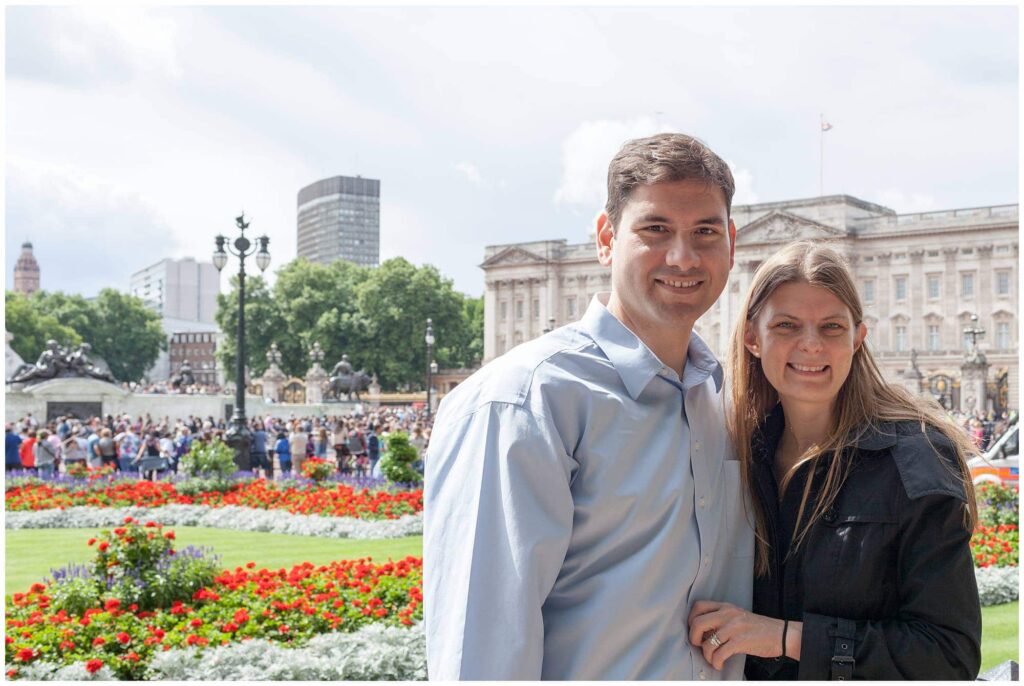
There’s a feeling of dread when I hand my camera to a passerby and ask them to take a photo with my camera. The 35mm lens does a great job in this case though. It’s wide enough that they can capture a “normal” looking shot vertically or horizontally, but it’s not so wide that you have to fight other tourists walking through your photos. In this case, Tom and I are in focus, but you can see the beautiful landscaping and Buckingham Palace. Sometimes I’ll set up the tripod and jump in the photo, but most of the time, I’d rather just hand my camera to someone and ask for a photo, if I can. The 35mm is perfect for that. Pro tip: Always make sure your settings are ready to go, otherwise you’ll end up with improperly exposed images. If you don’t have time to check your settings, flip the dial over to auto. Better safe than sorry. (I’m not someone who feels comfortable telling someone how to set up the photo I want and continually checking light/settings/framing.)
Travel Photography Tips
The 35mm lens is a really fun lens to play with because of its versatility. Here a few photography tips to get your creative juices flowing:
- Change how you are framing a subject. Is there a bridge you can shoot underneath? What about the entry way of the old city? Does it make sense to only show part of a subject? Instead of shooting a subject dead-on, look for ways to make the shot yours. Some of my most favorite images are when I’ve found a different place to shoot a classic image. Sometimes I’ll frame the Duomo with trees. Other times, I’ll shoot an image through a dramatic entryway or an old city gate. Look for ways to make your shot, well, yours!
- Play with your aperture. This lens is really fun for experimenting with aperture. If you’re going for a bright, light, ethereal quality to your images, shooting with a wider f/stop will allow more light in your lens. Remember: the smaller the number, the wider the f/stop. Some people refer to this as “blowing out” your images. It’s a personal choice. Some people love them, some people hate them. I think it depends on the trip and what I’m going for. That being said, if you want to capture sharp details or create a darker, moody feel to your images, use a smaller f/stop (a larger aperture number). If you’re looking for a good aperture that is right in the middle, I find apertures between f/8.0-f/9.0 to be the most reliable on bright, sunny days.
- Pay attention to reflections! Whether it’s how the reflection of buildings bounce off a river, how the light illuminates the cobblestones, or how a puddle reflects the sky, make sure you’re watching for those reflections that capture a magical moment or scene.
You can find more photography tips and/or travel gear on my blog.
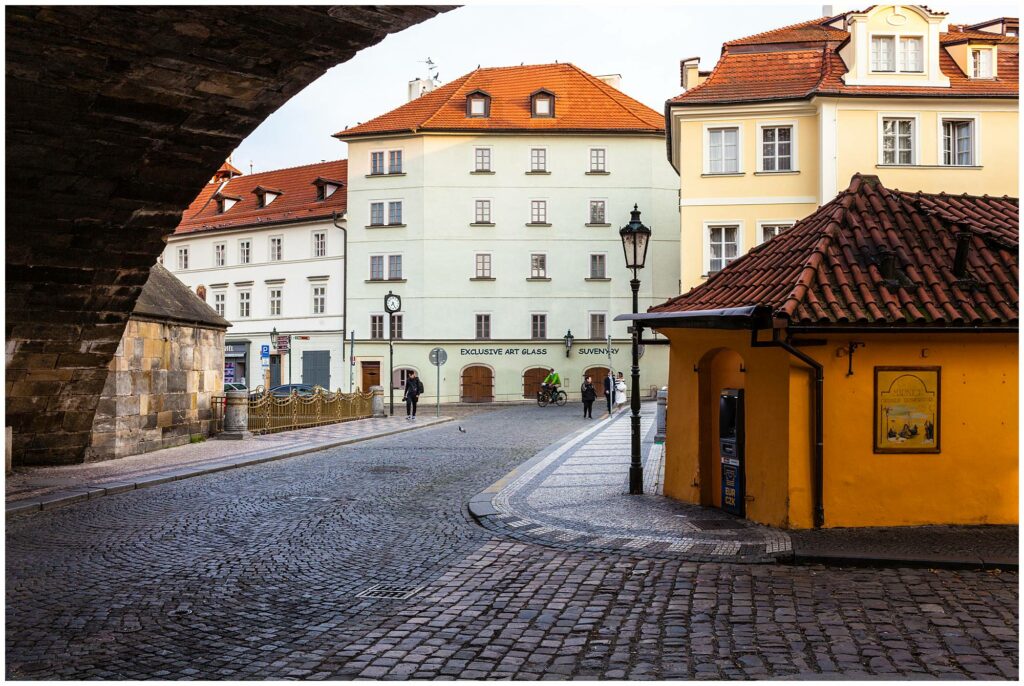
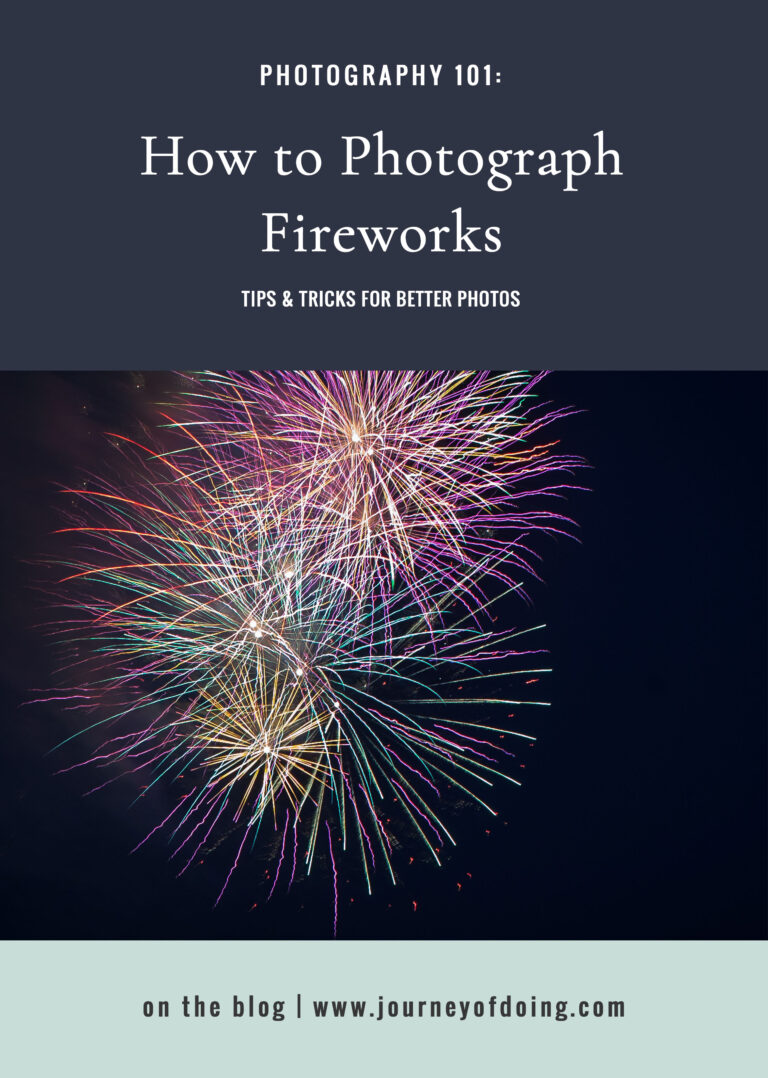
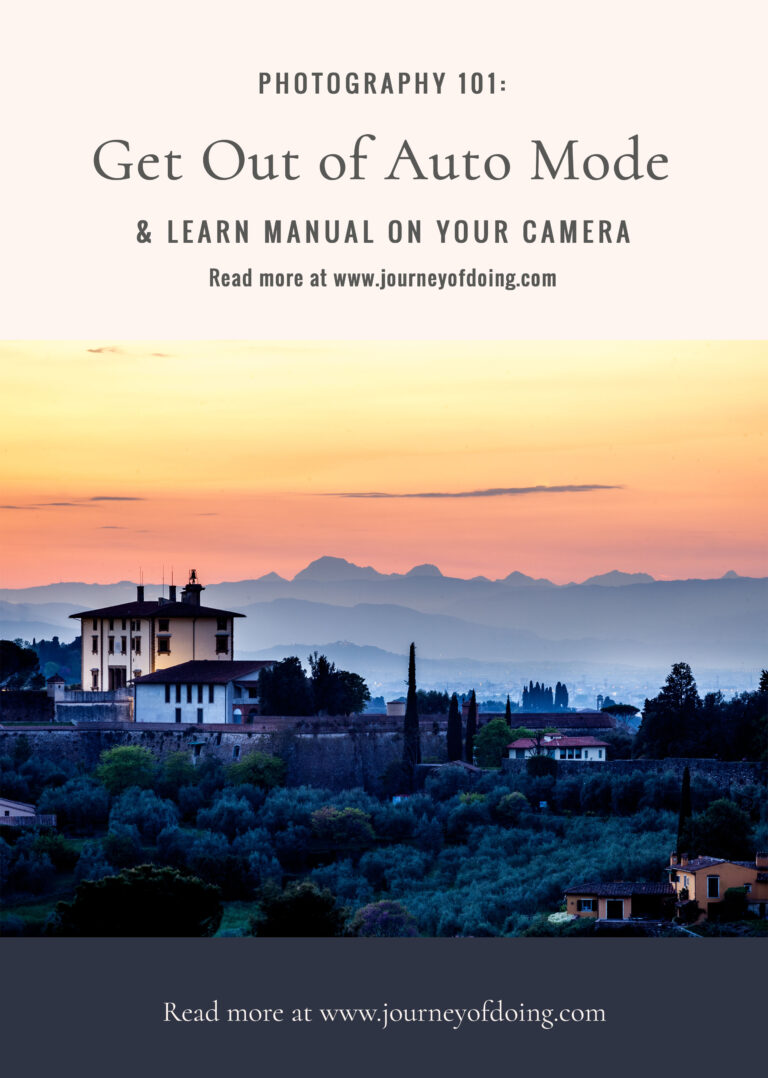
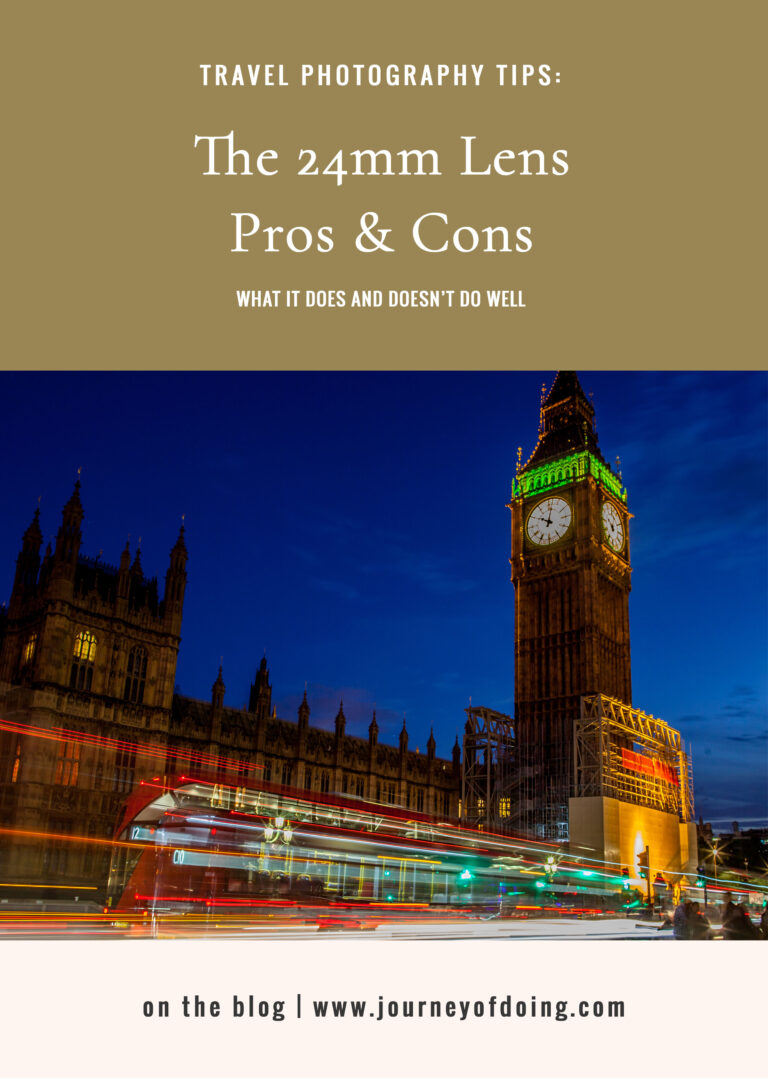
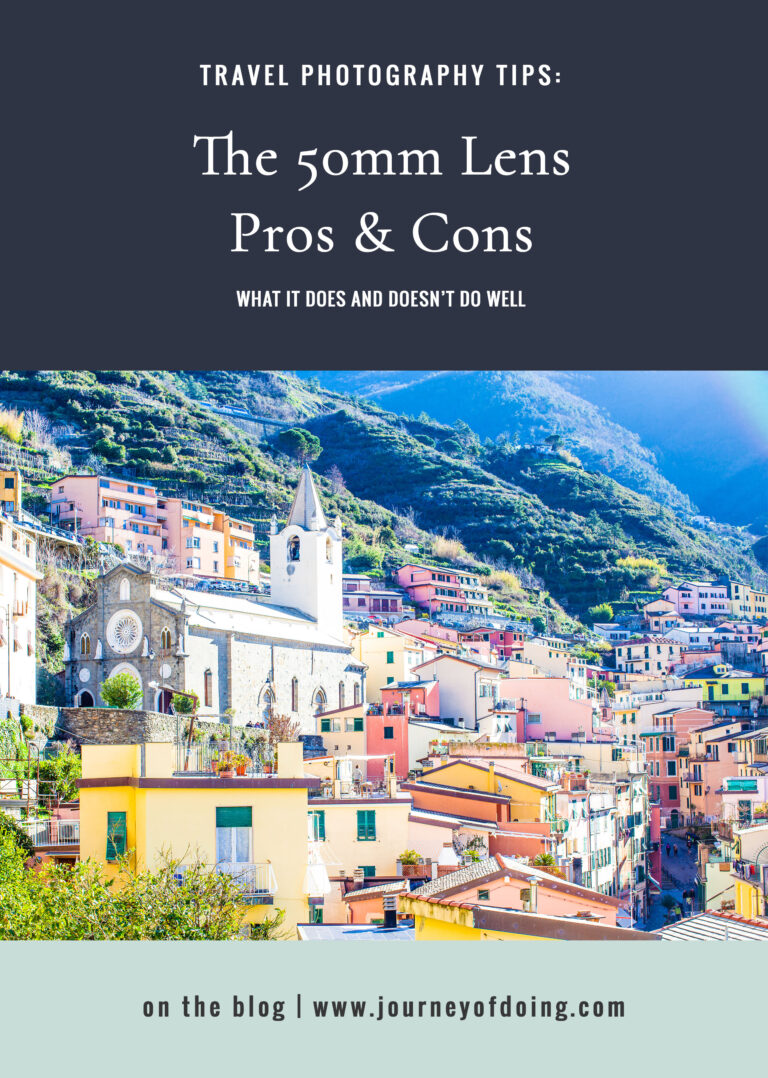
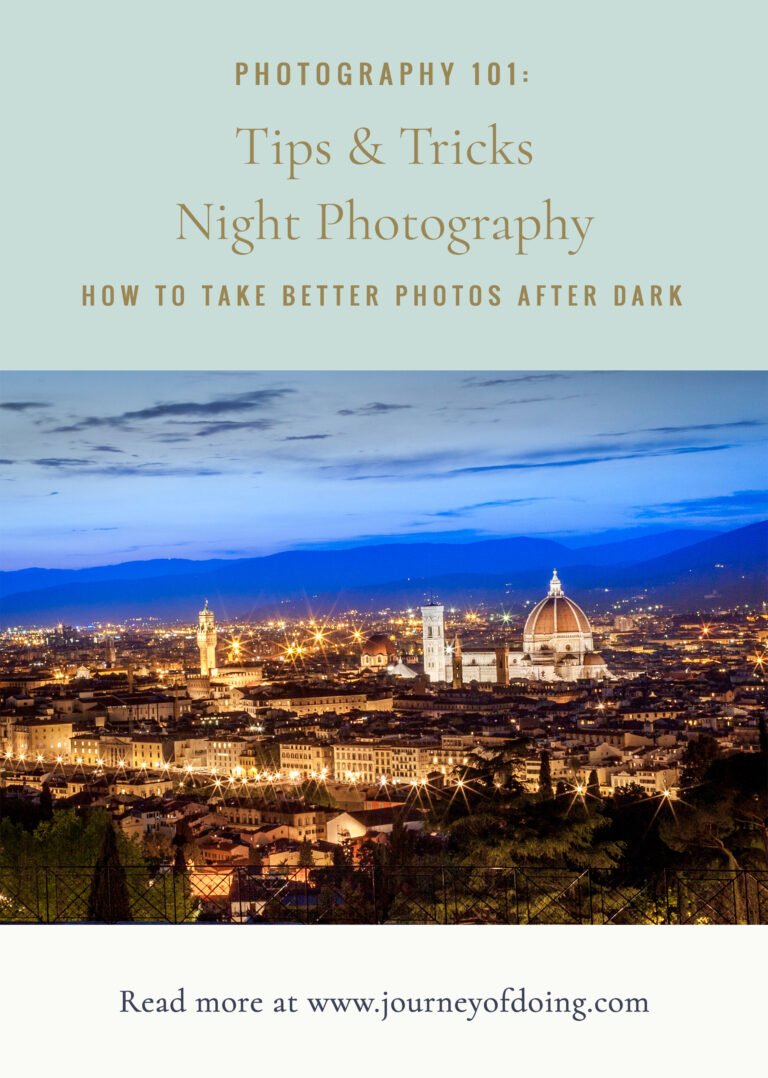
Your pictures are always GORG especially that carousel pic! I need you to teach me all your ways <3
<a href=”http://www.greenfashionistablog.com” title=”Green Fashionista”>Green Fashionista</a>
Quite interesting and insightful write-up. Just a small query: the discussion pertains to 35mm lens on full frame camera. For a cropped sensor camera such as Canon’s M6 camera, will it be okay if we use M-22 mm lens?